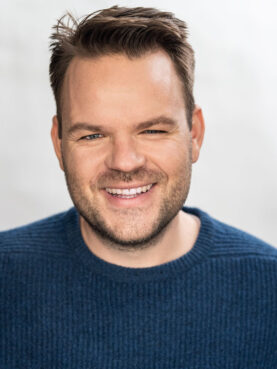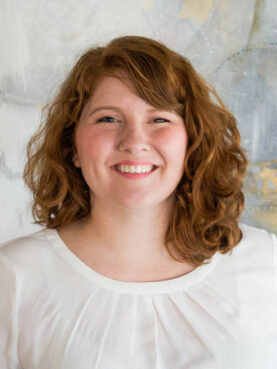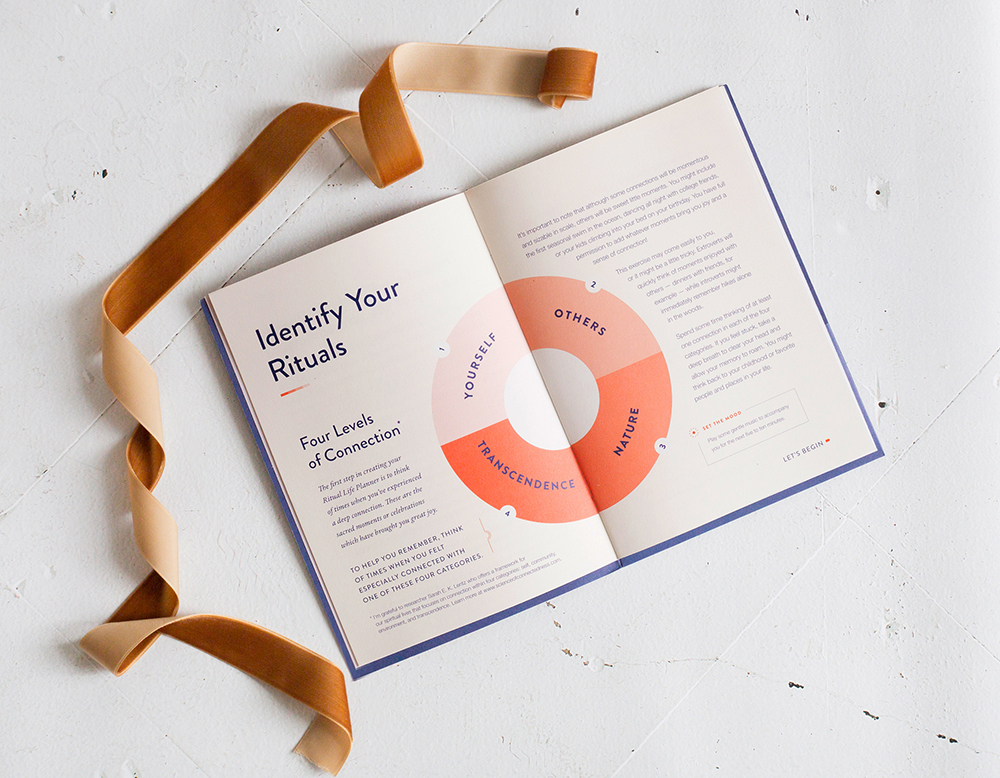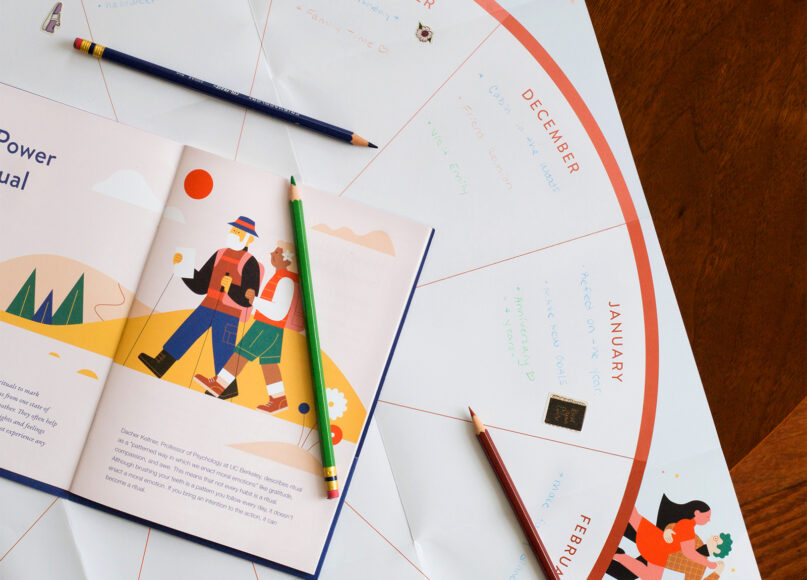(RNS) — “I’m not buying a 2021 planner until I see a trailer,” read one meme that circulated late last year.
Other people laughed at what a waste of money their 2020 planner had been, or how young and naïve they were when they bought it.
However, the beginning of another pandemic year largely locked down at home, the future still uncertain, may be the perfect time to flip the page in a new planner.
Not just so you can keep track of hectic virtual school schedules or see the blank spaces in a non-existent social calendar — but to help you stay grounded.

Casper ter Kuile. Photo by RJ Lewis
Keeping in turn with the wheel of the year or creating a personal rule to guide your days and give them meaning is more than just jotting down appointment times and travel dates — it’s a spiritual practice. At least that’s the case for Casper ter Kuile, a ministry innovation fellow at Harvard Divinity School and the co-founder of startup Sacred Design Lab.
“I think that points to the really big difference between a calendar for doing and a calendar for being,” ter Kuile told Religion News Service.
“For folks who use their calendar for ‘I have to achieve this’ or ‘I have to get this done by that time’ or ‘I’m going to be here rather than there,’ then you won’t have used your planner in the same way in 2020. But if it’s a reflection tool, in some ways, there hasn’t been a more intense time of reflection and, honestly, a reckoning.”
Faith-based planners have, of course, existed for years.
For witches, pagans and other magical practitioners, there are Magical Year planners they can color as they pencil in their plans, planners that follow the cycle of the moon, customizable planners with pages to fill in weekly tarot spreads and plans for each of the sabbats, or holidays.
Llewellyn has published its popular “Llewellyn’s Witches’ Calendar” since 1998.
Its accompanying “Llewellyn’s Witches’ Datebook” includes not just space to jot down one’s own important dates, but also the dates of the sabbats and moon phases. It notes dates to plant and dates to harvest, even a color of the day. It also includes information about and spells for the sabbats, as well as seasonal recipes and yoga poses.
That’s helpful information for anybody new to witchcraft, which has surged in popularity in recent years — perhaps why Llewellyn’s 2021 datebooks sold out and had to be reprinted this year, according to Kat Neff, a senior publicist for Llewellyn.
And living in tune with the wheel of the year — the eight sabbats that divide the year and the changing seasons in nature — is an important spiritual practice for pagans.
“It is vital that your magic echoes what is happening in the world — the tides of energy pouring into the world in spring, and out again in autumn. There is a time to receive, and a time to give back, and this is perhaps the most important thing of all,” wrote “Hearth Witch” author Anna Franklin for Llewellyn’s website.
Many Christians also follow the rhythm of the seasons in the liturgical year, which includes celebrations marking different events in Jesus’ life — his birth at Christmas, his resurrection from the dead at Easter.
For Jenn Giles Kemper, the creator of Sacred Ordinary Days, the liturgical year helps her connect with Jesus’ humanity and to see herself as “a whole, embodied, real human in a time and a place with very real relationships and responsibilities and roles just as Jesus had them.” It helps her connect with the seasons in nature, too, with times of introspection and times of celebration.
Sacred Ordinary Days planners include spiritual practices and reflection questions for each liturgical season, as well as pages to help users craft a “rule of life.”

Jenn Giles Kemper. Courtesy photo
The idea came to Kemper when she realized she was approaching her work from a mindset of productivity, not from the Benedictine-inspired rule she had adopted: “Our work is our prayer, our prayer is our work.”
Sacred Ordinary Days’ daily planners have Scripture readings and prayers alongside space to write to-dos, appointments or notes each day. They also have a weekly “Sabbath spread,” encouraging a rhythm of rest and reflection.
“My goal is that it’s a spiritual formation tool, and it just happens to be a planner,” Kemper said. “The goal is that it really helps you fully embody and be present to the current season that you’re in in a way that to-do lists and appointment reminders can’t.”
Popular planner brand The Happy Planner also has a faith-based line aimed at Christians, with space to creatively record Scripture verses, prayers and other notes each day. And Christian publishers have produced planners that integrate a Bible reading plan or a monthly devotional and planners that tie in with books by popular Christian authors.
But one doesn’t need to be religious for planning to be a meaningful or spiritual exercise, according to ter Kuile.
He’s amassed a collection of non-religious planners, interested in the way they describe religion and spirituality. In many ways, they create a “meditative or spiritual” experience or community or space for reflection — things that traditionally have belonged to the realm of religion, he said.
Among those planners is the 90-day “Monk Manual,” which says on its website it aims to “help busy people utilize timeless monastic principles to live with greater peace and purpose in their everyday lives.” Some, like “Reflection Ritual,” are meant to be used once a year. Others, like Silk + Sonder planners, offer a monthly subscription, creating a rhythm of planning and reflection.
“The congregation has been the central kind of distribution network of religious life for the last many hundred years, but that’s changing significantly. So what are people kind of moving towards? Podcasts is one. We’ve written a lot about fitness communities,” ter Kuile said.
“These kind of meaning-making product seem to be another piece in the puzzle.”

“The Ritual Life Planner” created by Casper ter Kuile. Photo by Julieanne Marie Photography
His own contribution to the genre is “The Ritual Life Planner,” a guidebook and annual planner based on his book, “The Power of Ritual: Turning Everyday Activities into Soulful Practices.”
He wanted to help people recognize the rituals that were already part of their lives and create what he calls a “map of your sacred time.” That sense of a liturgical calendar or wheel of the year can be obvious for people belonging to religious traditions, but nonreligious people also have rituals and rhythms “central to their meaning-making experience,” he said.
That can be a national holiday like Independence Day or a cultural celebration like Juneteenth or Pride. It can be football season, birthdays or memorials, a rhythm of special times and ordinary time.
“I’m trying to give people ways into seeing the rhythms of life they already have, but they might not have considered as rituals,” ter Kuile said.
And that’s important in 2021, or any other year, for people who consider themselves religious, spiritual or none of the above. It can help them to connect to the wisdom of traditions that have endured for generations. It can help deepen their own.
It might even help make sense of another unpredictable pandemic year.





